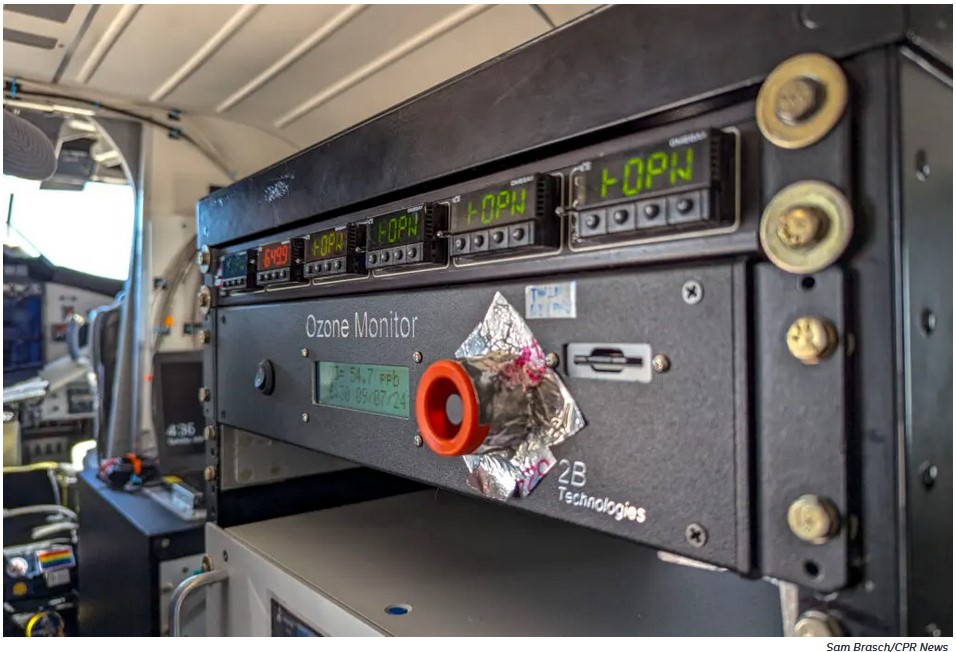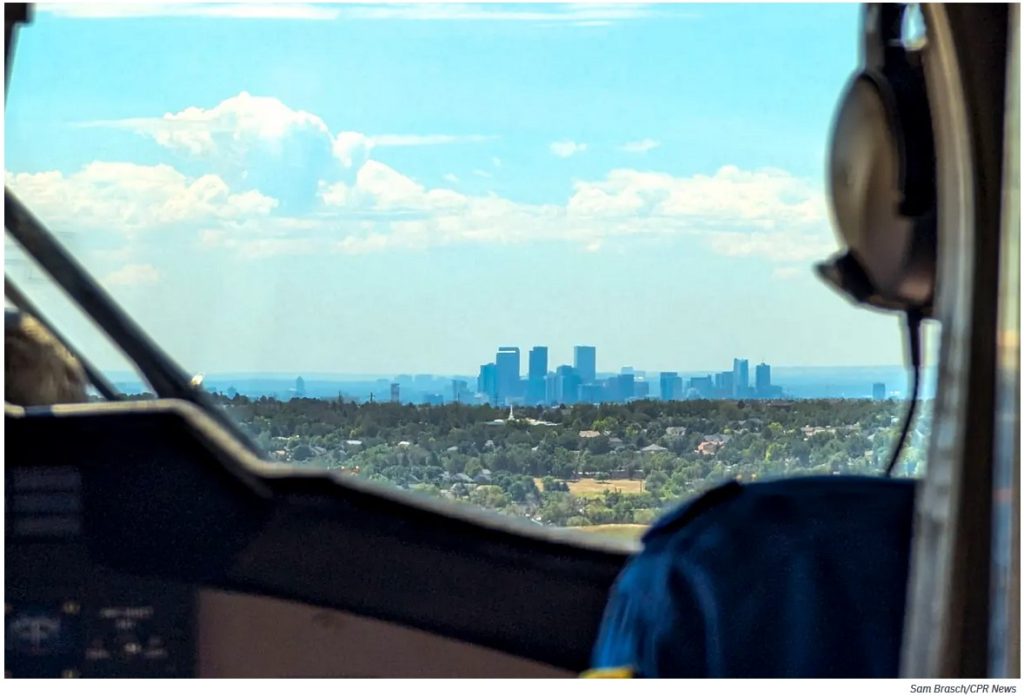Ozone a Main Concern in Denver’s Persistent Air Pollution Challenges.
The clock is ticking on Denver’s air pollution problems. Downgraded by the EPA to “severe nonattainment” status for ozone in 2022, the region has until 2027 to clean up its act.
This summer, scientists took their instruments into the skies to try to get a better grip on what’s causing the persistent high ozone in the region. NOAA scientists from Boulder flew on a Twin Otter research aircraft and sampled air above the cities, power plants, oil & gas operations, agricultural areas, and cattle feedlots throughout the area. Among the instruments onboard was a 2B Tech Model 205 ozone monitor, measuring the pollutant that’s center stage in the region’s nonattainment woes.

“Our ozone is not responding in the same way as other parts of the country. That’s somewhat of a mystery to us, and something we’d like to address with these kinds of research flights,” said Steve Brown, a research scientist at NOAA in Boulder who’s helping to lead the study.
We’re happy to see our Model 205 Ozone Monitor at the center of the action. Follow the links below to read more about the research.

The Front Range Can’t Shake its Ozone Problem. Scientists are Taking to the Skies to Find Out Why, Sam Brasch, CPR News, 16 July 2024.
Summer Airborne Research Targets Rocky Mountain Ozone Pollution, NOAA Communications and NOAA Chemical Sciences Laboratory, 8 July 2024.
